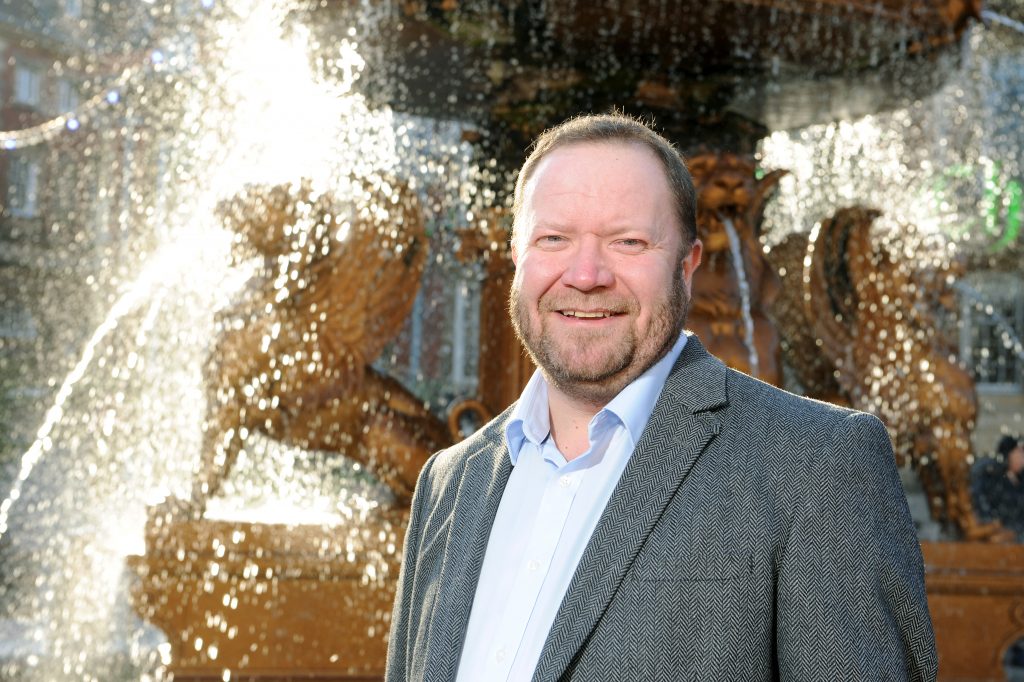A personal view by Gary Newby, News Editor, ITV News Central, and Head Judge of last year’s Leicestershire Curry Awards
Leicester’s crowning as the nation’s Curry Capital back in June, marks a milestone in the city’s evolution; confirmation, if it was needed, of the local industry’s stature and the boldness with which it regards itself, to say loudly: ‘We’re the best!”

What an extraordinary journey to get here. Still a relatively young industry born of the immigrants from the Indian sub-continent who began to arrive in 1960s, their numbers boosted by Asians from Kenya and Uganda from the early 1970s.
Now, Leicester has the highest number of Indian restaurants per capita in the UK, with an average of 47 per 100,000 people. The city specialises in a wide range of South Asian dishes with curries hailing from the likes of Nepal, India, Bangladesh, Afghanistan, Sri Lanka and Pakistan, each country having its own unique flavours and cooking techniques.
Wonderfully different, but each eatery sharing the same ambition to offer the best experience. They can feel familiar or strange places to visit, sometimes garish and noisy, or cosy and serene, almost always friendly and with exquisite-tasting food.
We owe much to those early founders for their enterprise and vision. They were a fairly brash bunch and, like the current incumbents of our curry restaurants, pubs and takeaway
businesses, they needed to be. The successful are hardened by overcoming obstacles not just to launch a business but thereafter the perplexity of problems simply to sustain it. It’s little wonder many trading names, some which were familiar to us, others around too briefly for us to get to know, have disappeared. Victims of over ambition (or too little of it), poor planning or just bad luck.
But many others have survived, proudly boasting under their names the year in which they were established, some reincarnated from their original form and new ones seem to sprout up everywhere all the time in a dizzying display of fortitude in a competitive market of spiralling costs and stagnate customer spending. Sharp elbows are needed in the jostle for position and for customers.
Competition is robust and keeps the industry on its toes. It leads to change and to success for those recognising and valuing in that which sets them apart. Few endure for decades and those that have share a reputation not only for exceptional food but also a warm, welcoming atmosphere, clean surroundings and attentive staff.
This recognition then is all the more important in what it signals. Yes, it has gained national and international attention and one the city feels an entitlement to. It’s a reward seen as richly deserved and not for an individual pioneer or a particular restaurant. No, this is an honour bestowed on all of those men and women who have done the city proud through their determination, business acumen and creative flair. They have helped us to embrace our city’s heritage.
With it comes a new spotlight on the city and more scrutiny; it throws down the gauntlet to not only live up to that ‘curry capital’ reputation but to work hard to maintain and better that which we have. It is a call to arms and we can all play our part in that.
As Mike Kapur, the Lord-Lieutenant of Leicestershire, put it: “We should make sure we take it as our opportunity to revitalise a lot of our city’s restaurants by getting out there, enjoying the great hospitality, the great food, making new friends and shouting out to the rest of the world that Leicester’s on the map and we intend to stay there.”
It’s a rallying call not just for the benefit of the curry industry. For it’s an important barometer of the city’s economic and cultural vibrancy, one that particularly excites and endures.
The unveiling of Leicester’s title as ‘England Curry Capital 2024’ was at a place fit for a king – the King Richard III Visitor Centre – and attended by local dignitaries and a number of local restaurateurs. The city will hold the title for two years toward the end of which it will go to a public vote to decide on a successor.
Until then there is a new light shining upon the industry; a chance to raise its profile in the minds of the public here and around the world, and the wider business community. And, importantly, to build upon a remarkable legacy for many to enjoy and to be reflected upon by future generations.



